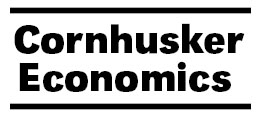Agricultural Economics, Department of

Cornhusker Economics
Date of this Version
3-23-2016
Document Type
Newsletter Issue
Citation
Cornhusker Economics, March 23, 2016, agecon.unl.edu/cornhuskereconomics
Abstract
Nonmetropolitan residents, those living outside central urbanized areas greater than 50,000 in population, are one of the largest medically underserved populations in the United States. Twenty percent of the U.S. population lives in nonmetropolitan areas, yet only nine percent of primary care providers are practicing in such areas (Rosenblatt and Hart 2000, 348). In addition to a geographic imbalance of healthcare practitioners, nonmetropolitan residents suffer from higher rates of chronic diseases and disability, report higher levels of obesity, are older on average, and are more likely to report being in fair or poor health than their metropolitan counterparts (Ricketts 2000, 640 and USDA ERS 2009, 43).


Comments
Copyright 2016 University of Nebraska.